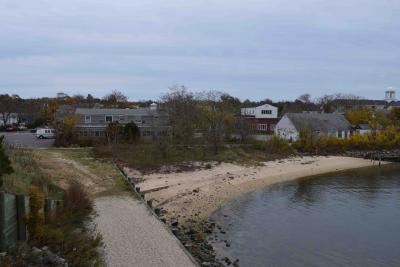Guilty Verdict in Zoning Violations
Guilty Verdict in Zoning Violations

A four-day jury trial in East Hampton Town Justice Court ended on Friday when an 80-year-old Huntington man was found guilty of seven misdemeanor violations of the town zoning code.
The charges against Donald Vanderveer, 80, were related to the use of his four-acre lot at 580 Three Mile Harbor-Hog Creek Road in Springs. The property, bordered by a nature trail, is zoned for residential use.
The jury, one man and five women, was asked to consider charges including counts of conducting a prohibited use on the property. Two neighbors, Patricia and Kenneth Smith, testified that it was being used as a scrapyard, with piles of rusting metal, tires, and old truck parts.
Mr. Vanderveer had also been charged with illegally changing the use of the land and having four structures on it — three old truck trailers and “a canvas carport” — that had neither building permits nor certificates of occupancy.
Mr. Smith testified that Mr. Vanderveer’s place, when he first saw it in 1985, was pastureland. “When we bought the property, we went over there,” the retired Suffolk County court officer testified. “He just told us to get off his property. He told us, ‘don’t come back.’ ”
The neighbors also told the jury that part of Mr. Vanderveer’s property was being used by a landscaping company. “All day, dump trucks with debris” go in and out, Mrs. Smith said.
Mr. Vanderveer’s lawyer, Lawrence Kelly, who teamed with Thomas W. Horn to handle the case, challenged Mrs. Smith’s description of the rusting objects as scrap. He asked if it would surprise her to hear that everything she saw next door had a use. “Yes,” she answered, adding, “Would you want it next to your yard?”
At one point Mr. Kelly asked Mrs. Smith, a retired special-education teacher who worked for 30 years at the Bridgehampton School, “Who was the last member of your family to work in a blue-collar job?” Michael Sendlenski, the East Hampton Town attorney who was prosecuting the case, objected, and Justice Steven Tekulsky ordered the question stricken from the record.
The town’s star witness was Donald Kauth of the Town Ordinance Enforcement Department. He never could gain access to Mr. Vanderveer’s land, he told the jury, but was able to take photographs of it from the Smiths’ property, as well as from land belonging to Jeane and Don Ulsheimer, who had also complained about the situation. Mr. Kauth, unable to find Mr. Vanderveer, posted a notice of violation on a tree at the entrance to his property on Sept. 3, 2014.
During his cross-examination of Mr. Kauth, Mr. Kelly continually cited the New York State Uniform Fire Prevention and Building Code, contending that it trumped not only the town building code but its zoning code as well.
Mr. Vandeveer, testifying on his own behalf, stated that he had never received the notice of violation. Later, though, he said he had received it in the mail, and later still that Mr. Kaupf had handed it to him in person.
He was asked if there was a financial relationship with David Whelan, whose marine construction company owns some of the items on the property. Mr. Vanderveer said there was not, and that he allowed Mr. Whelan him to use the property because he has a handicapped son. “It is God’s work,” Mr. Vanderveer said, emotionally.
Mr. Whelan, however, testified that there was a financial relationship, an exchange involving two of his barges that he docks at the defendant’s marina.
The jury took four hours to deliberate. At one point it became stuck on the charge of illegally changing the property’s use. Twice the members sent out notes that they were at an impasse, but Justice Tekulsky encouraged them to continue. In the end, the jury found Mr. Vanderveer guilty on that charge.
It also convicted him of three counts of failure to obtain a building permit and three counts of failing to obtain certificates of occupancy.
Outside the courtroom at the trial’s end, Mr. Kelly said Mr. Vanderveer’s arents had run a storage business on the property since before the zoning code was adopted, and that he was therefore entitled to carry it on or expand it. Mr. Sendlenski, however, said Monday that Mr. Vanderveer should have made that argument before the zoning board of appeals when he received the notice of violation. “Once you do that, the Justice Court case would be stayed, until they reached a determination,” the town attorney said.
Mr. Sendlenski was asked whether, in bringing the case to trial, the town was trying to send a message to code violators. “No,” he answered, “We are seeking compliance.”








